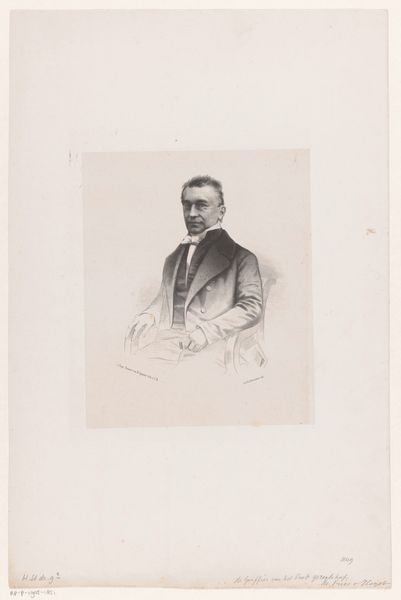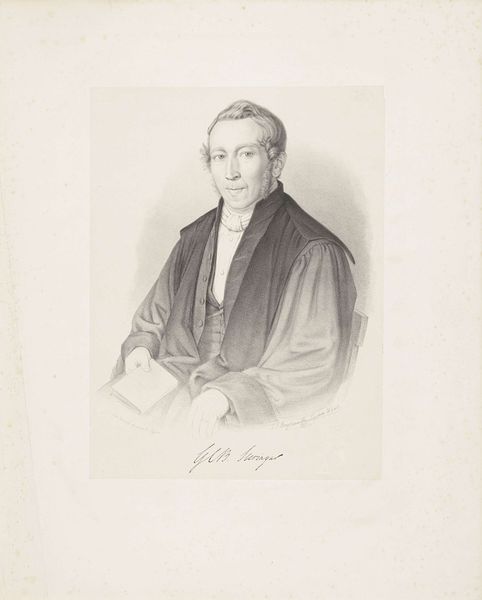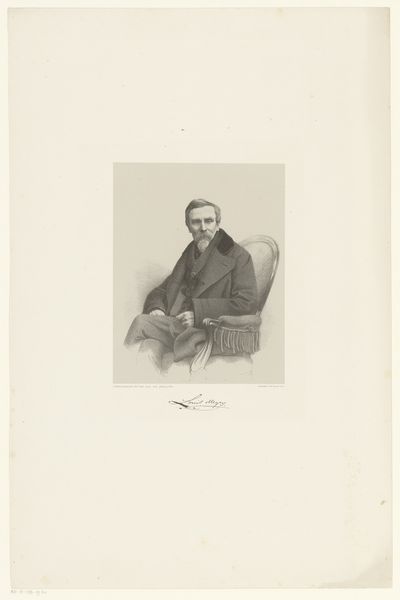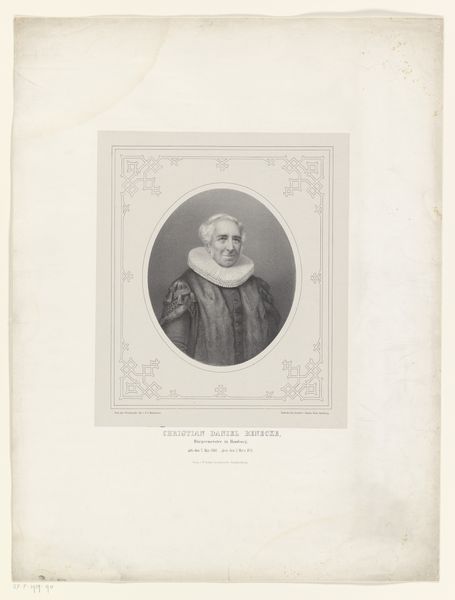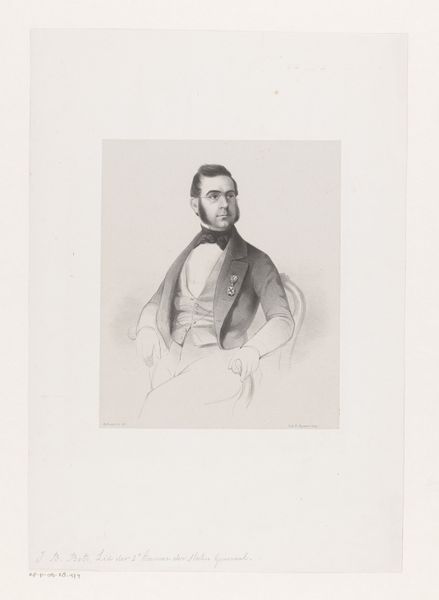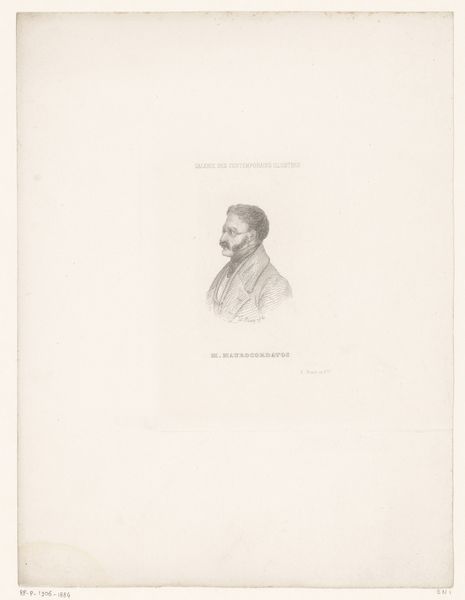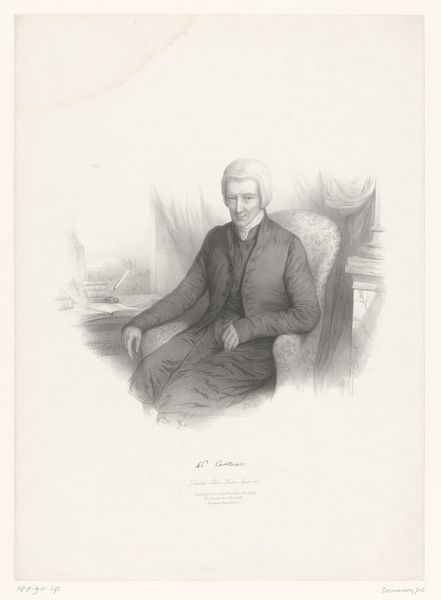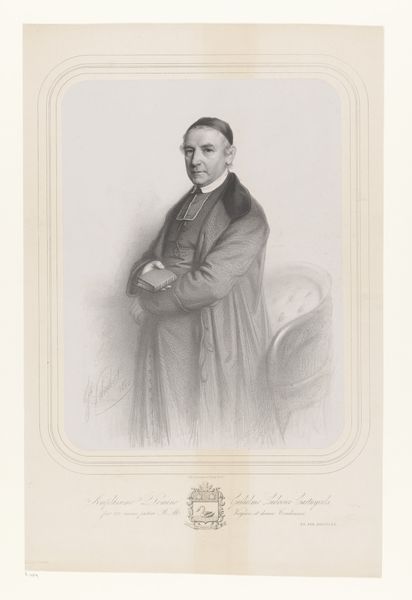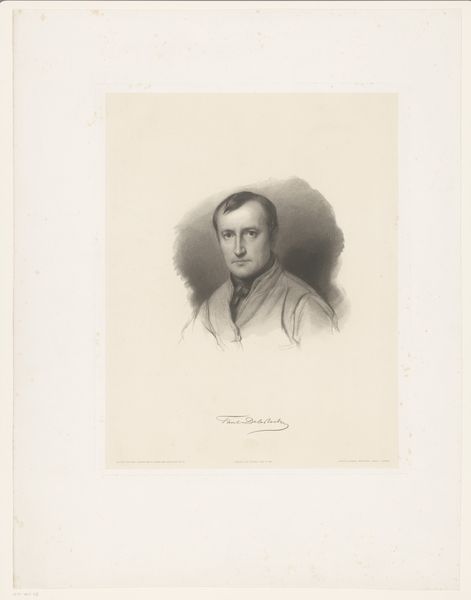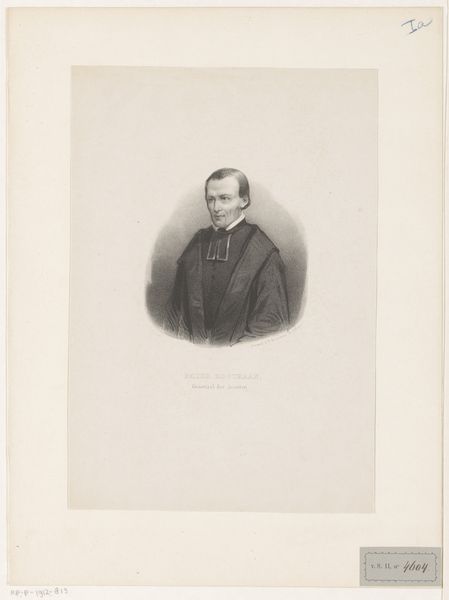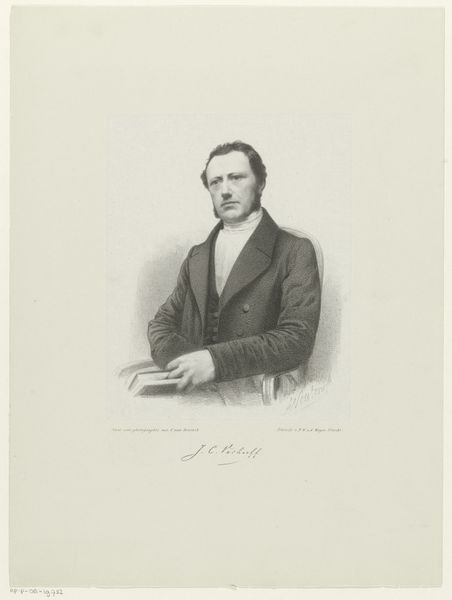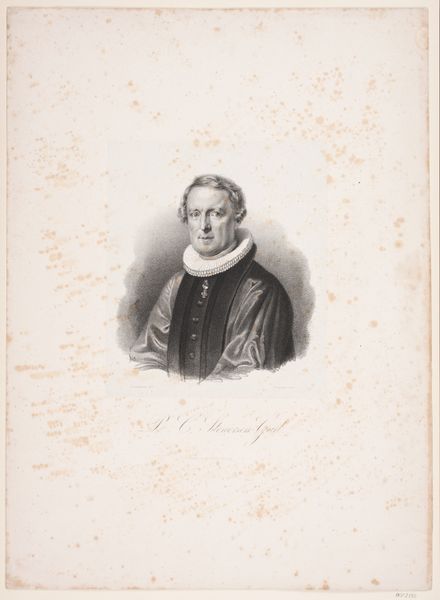
drawing, print, engraving
#
portrait
#
pencil drawn
#
drawing
#
light pencil work
# print
#
pencil sketch
#
light coloured
#
old engraving style
#
pencil drawing
#
pencil work
#
academic-art
#
engraving
#
realism
Dimensions: height 534 mm, width 387 mm
Copyright: Rijks Museum: Open Domain
Editor: So this is Marie-Alexandre Alophe’s "Portrait of Reverend Athanase-Charles Coquerel," created in 1848. It's an engraving, so a print, and the subject seems very serious, almost austere. What kind of story do you think this piece tells about the subject and the artist? Curator: This portrait reflects the intersection of religious authority and emerging media in 19th-century France. Engravings like this were vital tools for disseminating images of important figures, constructing their public personas. Coquerel was a significant Protestant voice; this image helped solidify his position. Editor: So, almost a kind of propaganda? Curator: It’s a tool for image cultivation. Think about who would commission and buy this print. What would owning a print of Coquerel signify? This relates to the growing bourgeois class who likely appreciated displays of refined and intellectual pursuits, and Coquerel embodied this. How does the formality of his robes contribute to this narrative? Editor: The robes definitely signal authority. It's interesting to think about how different media, even engravings, shaped public opinion and projected power in that era, like carefully curated social media today. I didn't really consider the cultural implications before. Curator: Precisely. It underscores the public role of art and how societal structures influence both the subject and its reception. Editor: I’ll certainly look at portraits with a more critical, historical eye going forward.
Comments
No comments
Be the first to comment and join the conversation on the ultimate creative platform.
